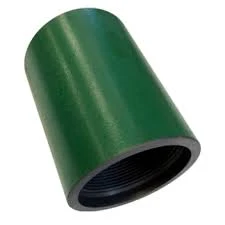- Afrikaans
- Albanian
- Amharic
- Arabic
- Armenian
- Azerbaijani
- Basque
- Belarusian
- Bengali
- Bosnian
- Bulgarian
- Catalan
- Cebuano
- Corsican
- Croatian
- Czech
- Danish
- Dutch
- English
- Esperanto
- Estonian
- Finnish
- French
- Frisian
- Galician
- Georgian
- German
- Greek
- Gujarati
- Haitian Creole
- hausa
- hawaiian
- Hebrew
- Hindi
- Miao
- Hungarian
- Icelandic
- igbo
- Indonesian
- irish
- Italian
- Japanese
- Javanese
- Kannada
- kazakh
- Khmer
- Rwandese
- Korean
- Kurdish
- Kyrgyz
- Lao
- Latin
- Latvian
- Lithuanian
- Luxembourgish
- Macedonian
- Malgashi
- Malay
- Malayalam
- Maltese
- Maori
- Marathi
- Mongolian
- Myanmar
- Nepali
- Norwegian
- Norwegian
- Occitan
- Pashto
- Persian
- Polish
- Portuguese
- Punjabi
- Romanian
- Russian
- Samoan
- Scottish Gaelic
- Serbian
- Sesotho
- Shona
- Sindhi
- Sinhala
- Slovak
- Slovenian
- Somali
- Spanish
- Sundanese
- Swahili
- Swedish
- Tagalog
- Tajik
- Tamil
- Tatar
- Telugu
- Thai
- Turkish
- Turkmen
- Ukrainian
- Urdu
- Uighur
- Uzbek
- Vietnamese
- Welsh
- Bantu
- Yiddish
- Yoruba
- Zulu
Differences Between Casing and Tubing in Oil and Gas Industry
The oil and gas industry relies heavily on various types of pipe systems for the drilling and production of hydrocarbons. Among these, casing and tubing are two fundamental components that serve essential, though distinct, functions in well construction and operation. Understanding the differences between casing and tubing is crucial for engineers and professionals in the field.
Casing refers to the large-diameter pipes that are installed in the drilled well to stabilize and protect the wellbore. It is typically made of steel and is inserted into the hole after drilling. The primary purpose of casing is to ensure the integrity of the well, preventing it from collapsing under the pressure of surrounding soil and rock. Additionally, casing isolates different pressure zones to prevent fluid migrations that could lead to contamination or blowouts. Once in position, casings are cemented in place, providing a rigid structure that reinforces the wellbore. There are various types of casing, including surface casing, intermediate casing, and production casing, each serving specific stages in the drilling process.
In contrast, tubing is a smaller diameter pipe that is installed inside the casing once the well has been drilled and completed. Its main function is to transport oil, gas, or water from the reservoir to the surface. Tubing is typically lighter and more flexible than casing and is not cemented into place. Instead, it hangs inside the casing, allowing for easier removal and replacement if necessary. The design of tubing is tailored to withstand high pressures and corrosive environments, making it vital for the effective production of hydrocarbons.
The operational differences between casing and tubing also extend to their installation processes. Casing is generally set in place using a drilling rig, while tubing is installed after the completion of the drilling phase. Tubing can be run into the well using a service rig, allowing for efficient workover operations. This distinction is significant, as it affects the overall cost and timeline of drilling and production operations.
what are the differences between casing and tubing?

In terms of pressure handling, casing is designed to withstand the external pressures of the rock formations surrounding the well, while tubing is engineered to manage the internal pressures of the fluids being transported. The casing must be robust enough to provide structural integrity to the well, while tubing must have the appropriate wall thickness and material composition to handle the corrosive nature of the extraction fluids.
Additionally, maintenance and repair considerations differ between the two. Casing, once installed and cemented, is a permanent feature of the well and generally remains in place throughout its operational life. Conversely, tubing can be periodically pulled out for inspection, maintenance, or replacement as needed, which allows for continued optimization of production.
In summary, while both casing and tubing are critical to the process of oil and gas extraction, they serve distinctly different roles. Casing provides structural stability and isolation within the well, while tubing facilitates the actual flow of resources from the reservoir to the surface. Understanding these differences is essential for optimizing drilling strategies and ensuring the safety and efficiency of oil and gas operations.
-
Tubing Pup Joints: Essential Components for Oil and Gas OperationsNewsJul.10,2025
-
Pup Joints: Essential Components for Reliable Drilling OperationsNewsJul.10,2025
-
Pipe Couplings: Connecting Your World EfficientlyNewsJul.10,2025
-
Mastering Oilfield Operations with Quality Tubing and CasingNewsJul.10,2025
-
High-Quality Casing Couplings for Every NeedNewsJul.10,2025
-
Boost Your Drilling Efficiency with Premium Crossover Tools & Seating NipplesNewsJul.10,2025







